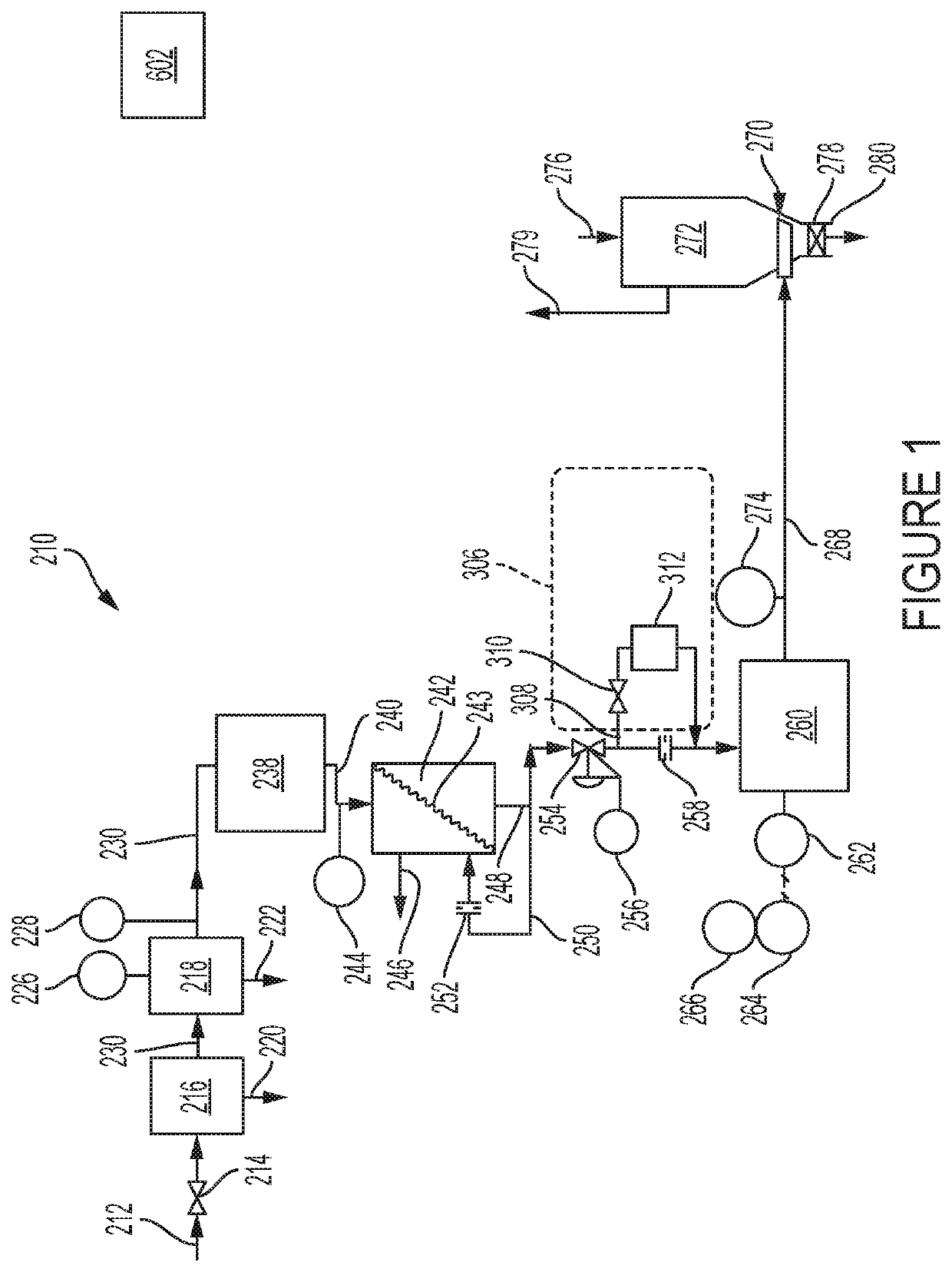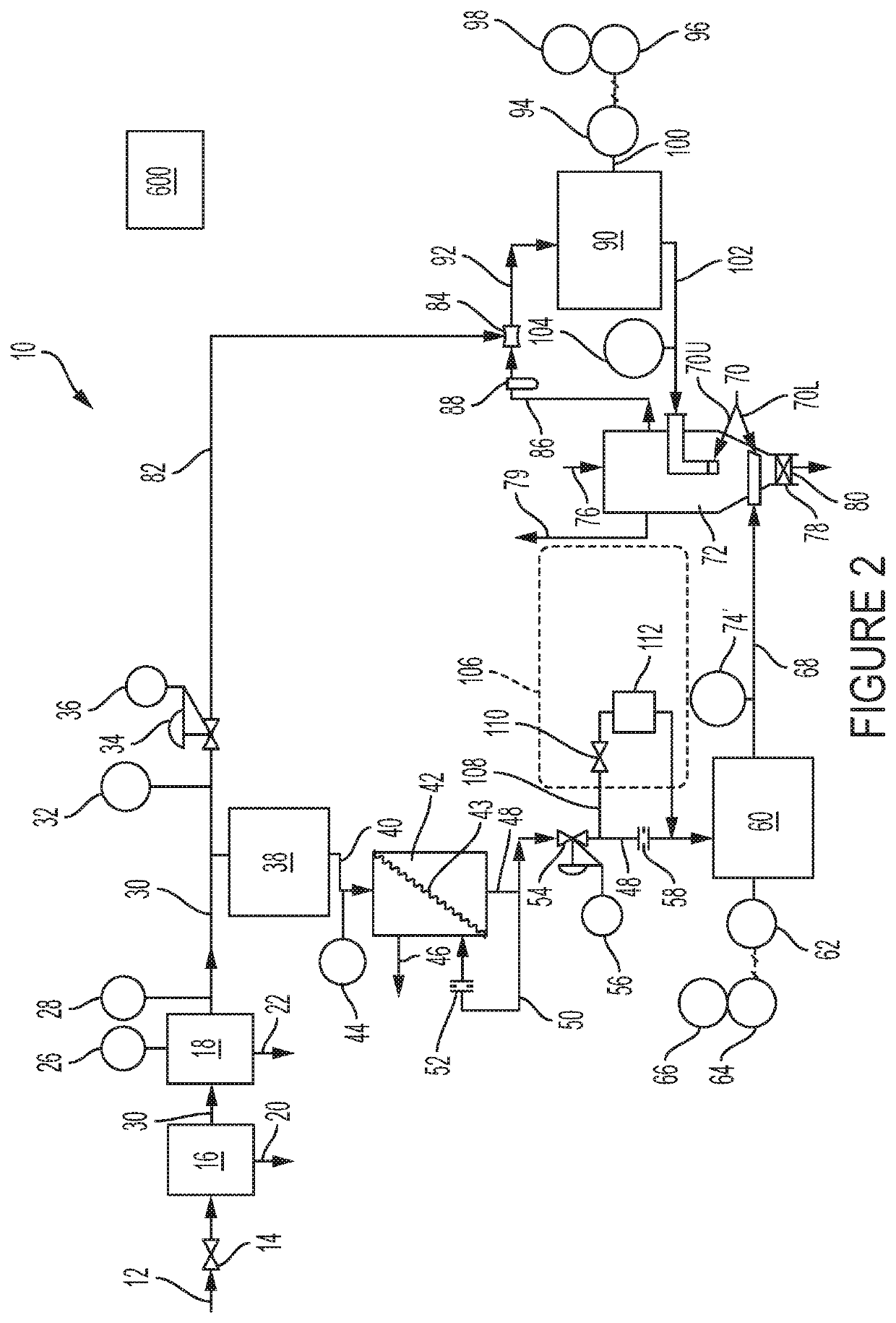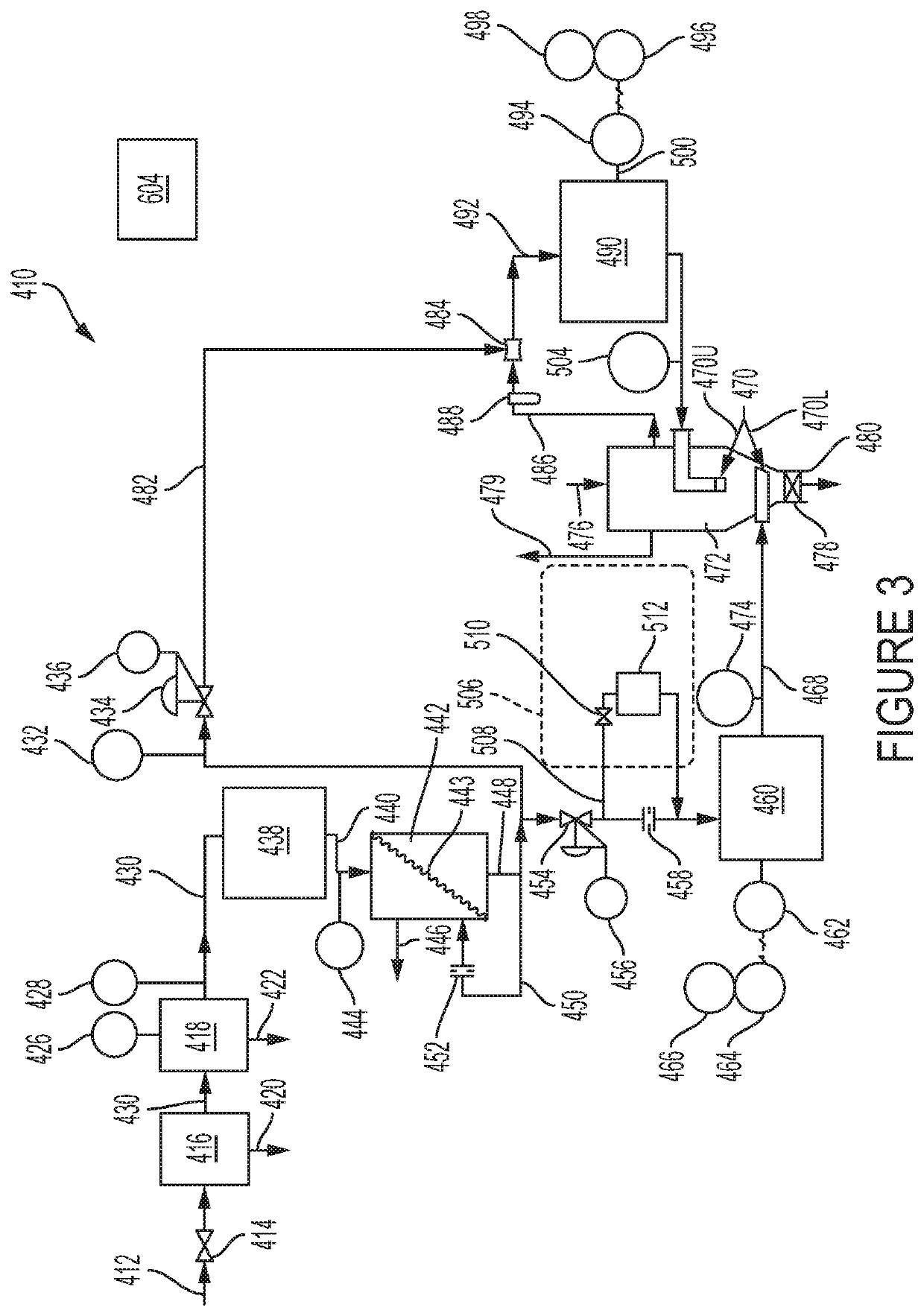Method and apparatus for polymer drying using inert gas
a technology of inert gas and polymer, which is applied in the direction of granular material drying, lighting and heating apparatus, furniture, etc. it can solve the problems of desiccant material being loaded with water, losing its effectiveness as drying media, and significant drawbacks of desiccant type drying system, so as to reduce the time that the polymer is exposed to heat, reduce the time of polymer exposure, and reduce the degradation of the polymer. , the effect of reducing the time o
- Summary
- Abstract
- Description
- Claims
- Application Information
AI Technical Summary
Benefits of technology
Problems solved by technology
Method used
Image
Examples
Embodiment Construction
[0035]Referring to the drawings in general and specifically to FIG. 2, a granular material drying apparatus in accordance with the invention is illustrated schematically, is designated generally 10, and has a compressed air inlet 12 leading to an inlet shutoff valve 14. Downstream from the inlet shutoff valve 14 is a primary filter 16, followed by a secondary filter 18. An input line 30 is provided for passage of compressed air from inlet shutoff valve 14 to primary filter 16, from primary filter 16 to secondary filter 18, and from secondary filter 18 on into additional components of granular material drying apparatus 10.
[0036]Primary filter 16 has associated therewith a first condensate drain 20 for drain of condensate filtered out of the incoming air stream by primary filter 16. Similarly, secondary filter 18 has a second condensate drain 22 associated therewith for drainage of condensate filtered out of the incoming air stream by secondary filter 18. Primary filter 16 and seconda...
PUM
| Property | Measurement | Unit |
|---|---|---|
| separation | aaaaa | aaaaa |
| separation | aaaaa | aaaaa |
| separation | aaaaa | aaaaa |
Abstract
Description
Claims
Application Information
 Login to View More
Login to View More - R&D
- Intellectual Property
- Life Sciences
- Materials
- Tech Scout
- Unparalleled Data Quality
- Higher Quality Content
- 60% Fewer Hallucinations
Browse by: Latest US Patents, China's latest patents, Technical Efficacy Thesaurus, Application Domain, Technology Topic, Popular Technical Reports.
© 2025 PatSnap. All rights reserved.Legal|Privacy policy|Modern Slavery Act Transparency Statement|Sitemap|About US| Contact US: help@patsnap.com



